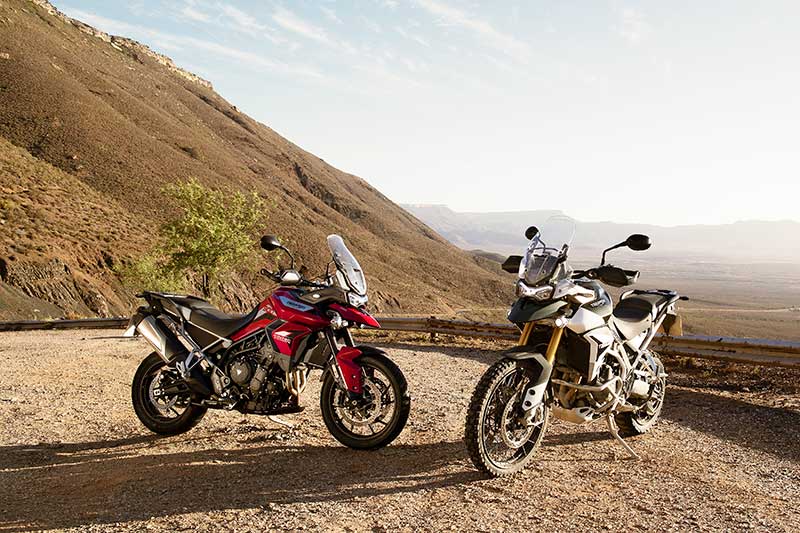
For the 2011 model year, Triumph launched two all-new models – the Tiger 800 and more off-road-oriented Tiger 800 XC, both powered by a 799cc in-line triple – in what was then a much smaller and less competitive middleweight adventure bike segment, with competition coming primarily from BMW’s F 650 GS and F 800 GS.
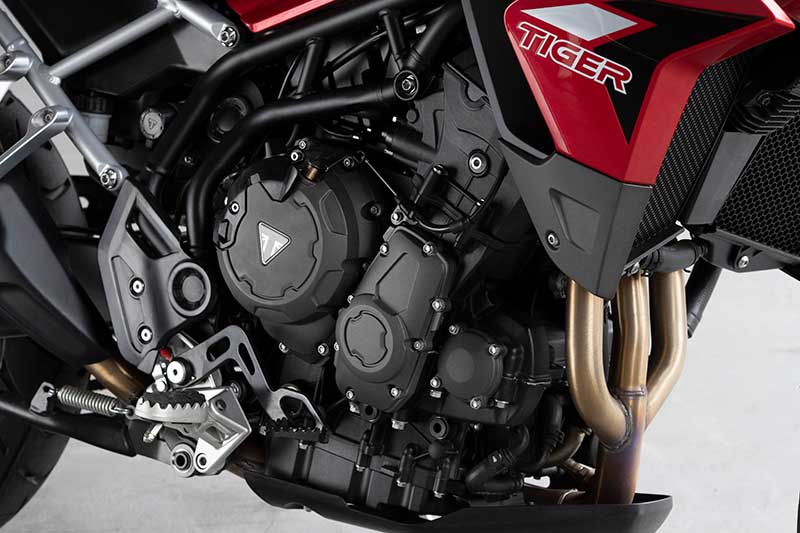
Adventure bikes have been a rare bright spot of growth in what has been a stagnant decade in terms of motorcycle sales since the Great Recession. And where there’s growth, competition flows in like the tide in the hopes of raising more boats. We’ve seen a proliferation of new models and new technology in the segment, with adventure bikes all but displacing traditional sport- touring motorcycles and some offering nearly superbike levels of power and specification.
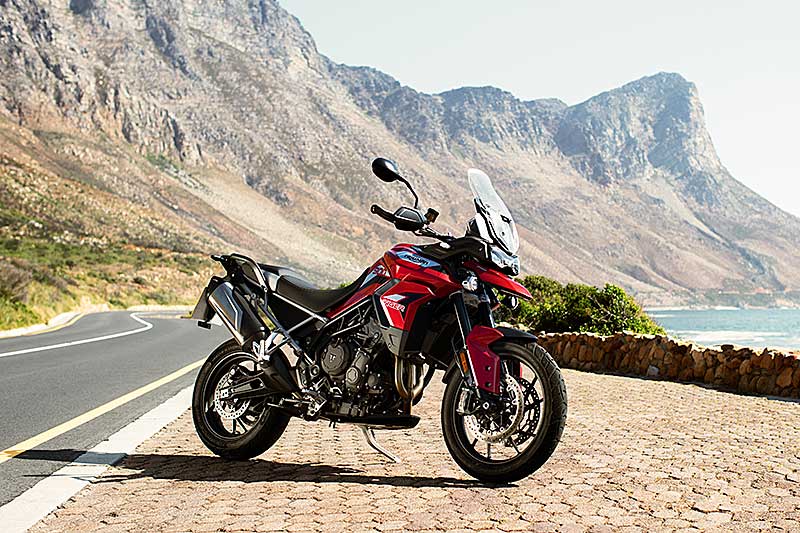
Triumph added a 1,215cc triple-powered Tiger Explorer for 2012, it updated and expanded its Tiger 800 lineup to four models (XR, XRx, XC and XCx) for 2015 and it rolled out no fewer than six Explorer models for 2016. By the time the 2018 model year rolled around, both the Tiger 800 and Tiger 1200 (formerly Explorer) families were comprised of six models each – XR, XRx, XRx Low Ride Height (LHR), XRT, XCx and XCA – offering varying levels of specification and on-/off-road worthiness.
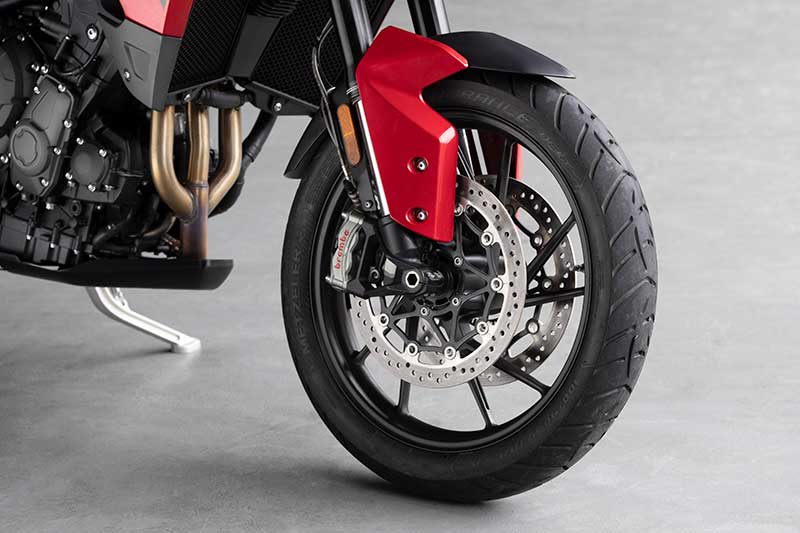
Triumph decided to simplify things somewhat for 2020, with five middleweight Tiger models: Tiger 900, Tiger 900 GT, Tiger 900 GT Pro, Tiger 900 Rally and Tiger 900 Rally Pro. If you’re keeping tabs on the progression of model designations, the Tiger 900 and Tiger 900 GT/Pro models replace the more street-oriented XR models, and the Tiger Rally/Pro models replace the more off-road-oriented XC models.
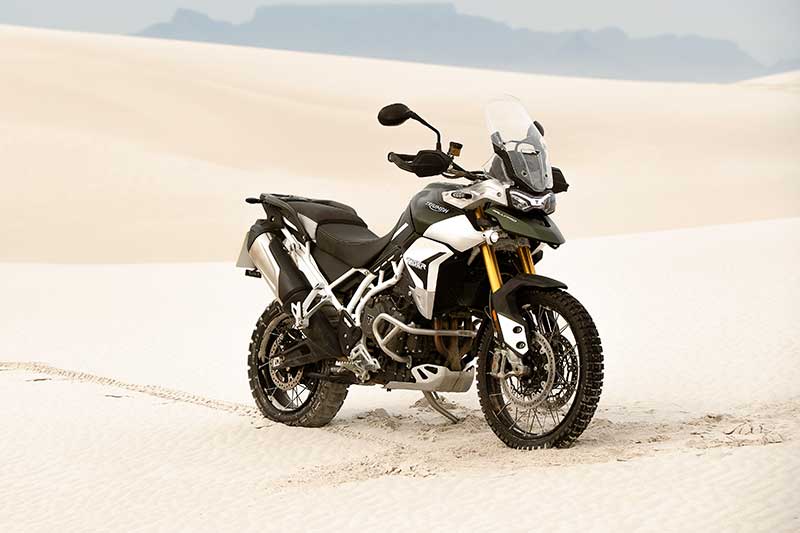
The Tiger 900 lineup is powered by a larger 888cc, DOHC, 4-valves-per-cylinder in-line triple that makes a claimed 94 horsepower and 64 lb-ft of torque, with more midrange power and 10% higher peak torque than its 799cc predecessor. Widening the triple’s bore from 74 to 78mm (stroke is unchanged at 61.9mm) yielded an 89cc increase in displacement. The updated engine gets a new 1-3-2 firing order for more character, and Triumph says the Tiger 900 offers class-leading acceleration and a distinctive soundtrack.
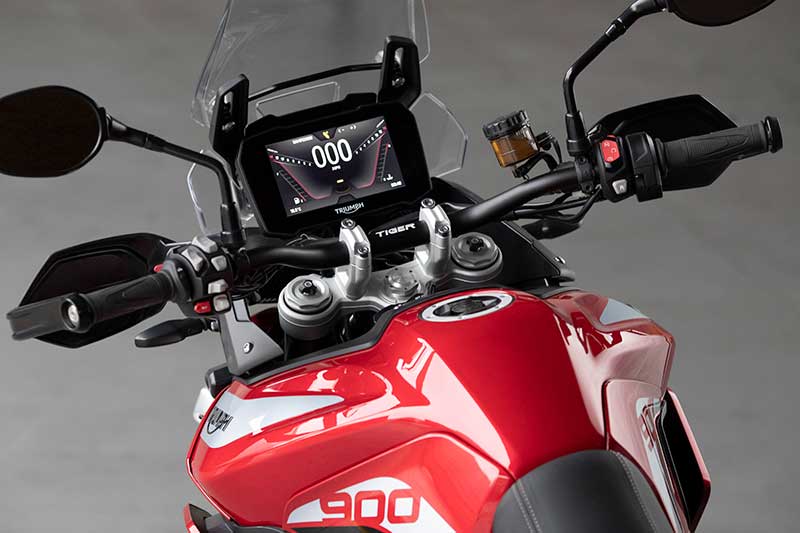
Triumph revised the Tiger 900 platform from the ground up, with a new modular, tubular-steel main frame and a bolt-on subframe, top-of-the-line Brembo Stylema monoblock front calipers, new bodywork and new LED lighting.
Other new features vary by model:
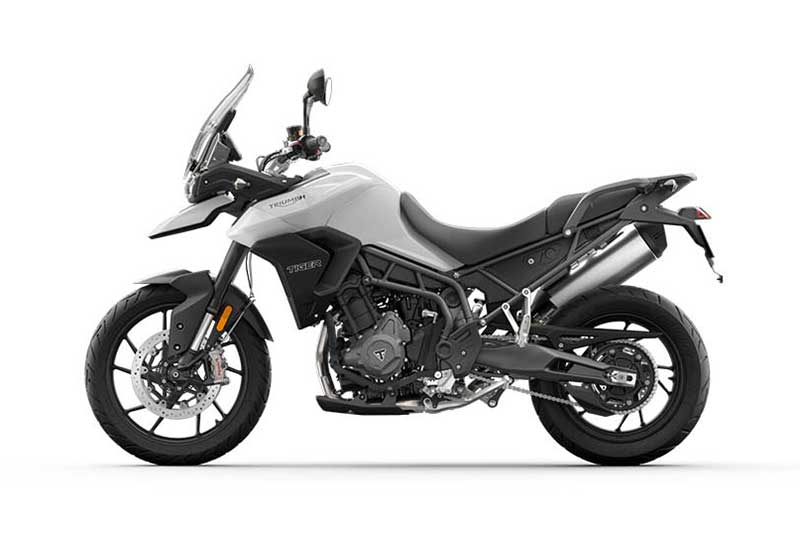
Tiger 900
- Cast wheels, 19-in. front, 17-in. rear
- Marzocchi 45mm USD fork, non-adj., 7.1-in. travel
- Marzocchi shock, adj. for spring preload, 6.7-in. travel
- Seat height: 31.9/32.7 in.
- Standard ABS
- Ride modes: Road, Rain
- 5-inch TFT display
- Fuel capacity: 5.3 gals.
- Dry weight (claimed): 423 lbs.
- Color options: Pure White
Tiger 900 GT
- Cast wheels, 19-in. front, 17-in. rear
- Marzocchi 45mm USD fork, adj. for compression & rebound, 7.1-in. travel
- Marzocchi shock, adj. for spring preload & rebound, 6.7-in. travel
- (GT Low Ride Height: 5.51/5.95 in. travel)
- Seat height: 31.9/32.7 in. (GT LRH: 29.9/30.7 in.)
- Radial front master cylinder
- Cornering ABS and traction control with IMU
- Ride modes: Road, Rain, Sport, Off-Road
- 7-inch TFT display
- Illuminated switches with a 5-way joystick
- Electronic cruise control
- Heated grips
- Secure mobile phone storage with USB charging port
- Fuel capacity: 5.3 gals.
- Dry weight (claimed): 428 lbs. (GT LRH: 426 lbs.)
- Color options: Korosi Red, Sapphire Black and Pure White, all featuring premium tank badges and contemporary new decals
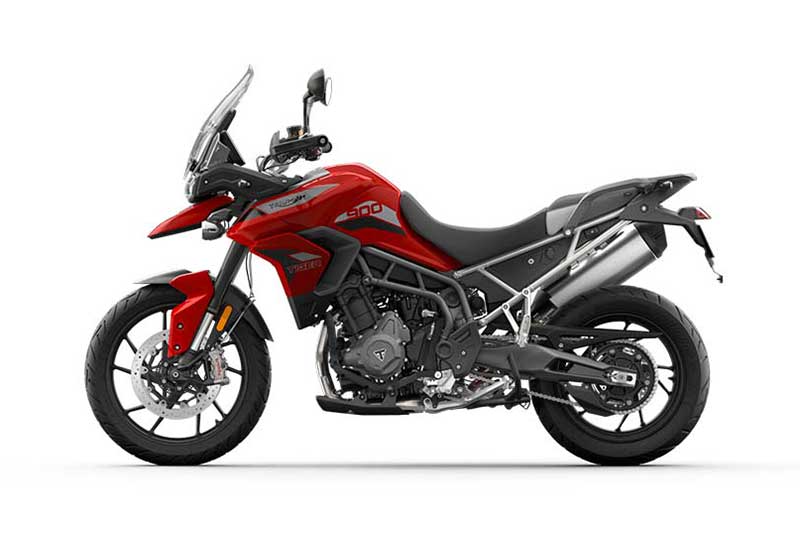
Tiger 900 GT Pro
- Cast wheels, 19-in. front, 17-in. rear
- Marzocchi 45mm USD fork, adj. for compression & rebound, 7.1-in. travel
- Marzocchi shock, electronically adj. for spring preload & rebound, 6.7-in. travel
- Seat height: 31.9/32.7 in.
- Radial front master cylinder
- Cornering ABS and traction control with IMU
- Ride modes: Road, Rain, Sport, Off-Road, Rider-configurable
- Triumph Shift Assist (up/down quickshifter)
- 7-inch TFT display
- Illuminated switches with a 5-way joystick
- Electronic cruise control
- Heated grips
- Heated seats
- Tire-pressure monitoring system
- LED auxiliary lights
- Secure mobile phone storage with USB charging port
- My Triumph Bluetooth connectivity
- Fuel capacity: 5.3 gals.
- Dry weight (claimed): 437 lbs.
- Color options: Korosi Red, Sapphire Black and Pure White, all featuring premium tank badges and contemporary new decals
Tiger 900 Rally
- Spoked tubeless wheels, 21-in. front, 17-in. rear
- Showa 45mm USD fork, fully adj., 9.5-in. travel
- Showa shock, adj. for spring preload & rebound, 9.1-in. travel
- Seat height: 33.5/34.3 in.
- Radial front master cylinder
- Cornering ABS and traction control with IMU
- Ride modes: Road, Rain, Sport, Off-Road
- 7-inch TFT display
- Illuminated switches with a 5-way joystick
- Electronic cruise control
- Heated grips
- Secure mobile phone storage with USB charging port
- Fuel capacity: 5.3 gals.
- Dry weight (claimed): 432 lbs.
- Color options: Matte Khaki, Sapphire Black and Pure White, all featuring contemporary new decals and a distinctive white frame inspired by the Tiger Tramontana rally bike
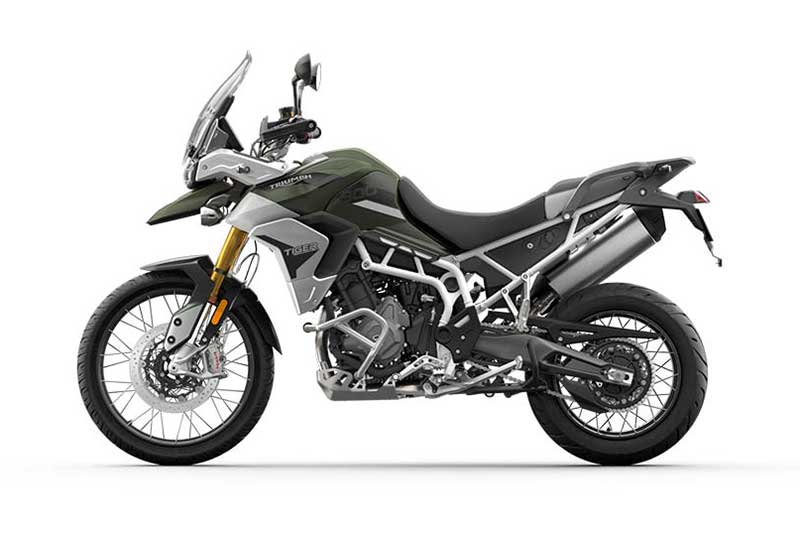
Tiger 900 Rally Pro
- Spoked tubeless wheels, 21-in. front, 17-in. rear
- Showa 45mm USD fork, fully adj., 9.5-in. travel
- Showa shock, adj. for spring preload & rebound, 9.1-in. travel
- Seat height: 33.5/34.3 in.
- Radial front master cylinder
- Cornering ABS and traction control with IMU
- Ride modes: Road, Rain, Sport, Off-Road, Rider-configurable, Off-Road Pro
- Triumph Shift Assist (up/down quickshifter)
- 7-inch TFT display
- Illuminated switches with a 5-way joystick
- Electronic cruise control
- Heated grips
- Heated seats
- Tire-pressure monitoring system
- LED auxiliary lights
- Secure mobile phone storage with USB charging port
- My Triumph Bluetooth connectivity
- Fuel capacity: 5.3 gals.
- Dry weight (claimed): 443 lbs.
- Color options: Matte Khaki, Sapphire Black and Pure White, all featuring contemporary new decals and a distinctive white frame inspired by the Tiger Tramontana rally bike
The 2020 Triumph Tiger 900 Rally and Tiger 900 Rally Pro will be available in March. The Tiger 900, Tiger 900 GT and Tiger GT Pro will be available in April. Pricing for the Tiger 900 starts at $12,500; pricing for the other models is TBD.
Check out more new bikes in Rider’s 2020 Guide to New Street Motorcycles









I’m going to come out and say that the engines in these bikes are pretty unimpressive. I have a 2002 Triumph Tiger 955i, which by the model designation, is only 55cc more than this bike (but in reality is 67cc), yet my 18 year old bike STILL makes 10 MORE horsepower than the new model?! This is pretty poor engineering advancement by Triumph, if you ask me. Most middleweight sportbikes nowadays make the horsepower that literbikes used to; one would assume some advancement would continue across other model ranges as well. A 7% deficit in displacement shouldn’t result in a 10% deficit in horsepower – 18 years into the future! This cannot be blamed purely on Euro5 emissions either – just look at what Ducati is doing. What gives, Triumph?
I suspect that ultimate horsepower has been sacrificed for a broader torque curve. I don’t know what the the horsepower and torque curve is for these new Tigers, or what it was for your 955, but tailoring power delivery for specific applications has been going on for a while now. “Usable” power is typically what it is referred to, and by that, it means abundant power where most riders, for this type of bike, will be running the engine. In other words, manufacturers are trying to give us bikes that work well in the real world instead of peak specs that are only seen on the race track or dyno.
They have beaks! No beaks in my garage.
RV, that is the perfect response to the BHP confusion. Usable power makes a lot more sense than peak power.
95HP is way enough for an adventure bike. People looking for an adventure bike wouldn’t care much about peak power. Going for an increase in low end and mid range power band where it is most used rather than going for a few HP increase near red line .
The 765cc Street Triple RS with 123 HP would be a better choice if someone should look for a bike with performance as it’s designed for performance, not fun of exploring.
I agree with most of the gents here. Regarding the peak power, agree that usable is better. But für a bad to hear m comparison with old models, you might want to also take into account power to weight ratio.
Also in regards to answering to Ducati, that’s some of what the TFC thing was all I about.
To me, this model line makes more sense than having the 800 /105 / 1200 split. But that being said, I still love the Tiger Sport 1050.
I’m with you Lee A. I have a 1050 tiger sport. My previous bike was a Sprint 955ST. The ST was a grunt motor, hardly got it out of 3rd gear in the city, (unless you wanted multiple tickets) but wicked on the open road or a track.
The 1050 sport is much tamer. No quite as much grunt down low, but much more usable on the street. Great on the open road too. I’m actually looking at down sizing now the wife has her own bike (T100se Bonneville) and I’m not doubling when we tour.
I’ll be taking a new Tiger 900 GT for a test ride soon. Don’t think I need the electric wizardry of the Pro for my riding style. I never touched the factory settings on my Tiger Sport, even with occasionally doubling. I’ve ridden the older Tiger 800 ,I found them to be all rev’s and no torque. It felt like a 675 sports bike engine in a trail bike frame. I’m hoping the new 900 does a better job, ergonomics and performance. Can’t expect it to be as good as my old 955, but hoping it will come close at least to the 1050, which is Choked by EPA emissions & a Cat converter. Nether of which were on my old ST955…..
I’m interested to see how the crank phasing effects low to mid range performance???
I’m excited by these models. I currently own a Triumph Tiger Explorer 1200. I love the shaft drive and it’s been great for regular touring. I tell folks it’s like a Gold Wing for guys that live at the end of a dirt road (which I do). But I am getting older, and more intimidated by the sheer mass of the 1200. I would also like something a little more off-road worthy, which the nearly 700 lb. (wet, fully kitted) Explorer is not.
The Rally seems the way to go. It retained some of the neat touring features, like cruise control and heated grips. I assume a heated seat will be an option as with the TEx. But it also has the more off-road capable 21″ front wheel as a tubeless spoker, and if the beastie can be kitted wet for under about #550 that is a significant weight savings. It’ll need to compare favorably to the new mid-sized bikes from KTM and Husky, and as noted the triple is a fairly top-heavy design so weight distribution will be the ultimate indicator of function.
Not an original quote but we ”Buy BHP and Ride Torque” A broad low rev, high torque band is best for an off-roader, not that these soft-roaders go off-road in a major way. The staggered crankpin location will help this model deliver a V Twin like power delivery and a relatively cheap revised balance shaft will minimise out the vibes,
Agree
I admire the improvements, Triumph has upped the ante in this ever changing field. I am concerned about the longevity of the newer technology such as TFT screens and rider modes. Without sounding insulting, I guess it what millenials want and the market demands.
I question whether or not these advances will prove reliable and trouble free over the long haul. Only time will tell.